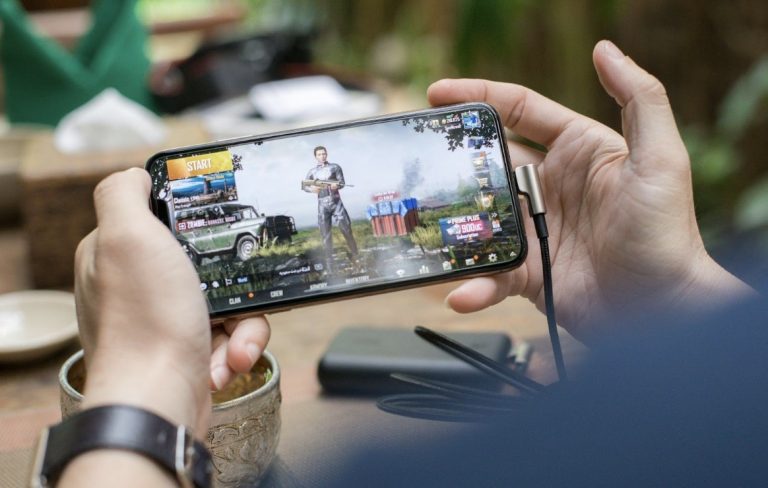The mobile gaming market has witnessed explosive growth. As of 2024, mobile gaming generated about $92 billion in revenue, more than double the $40 billion generated by PC gaming. The main reason behind the growth is smartphones’ accessibility and mobile devices’ increasing performance capabilities. Mobile games account for 74% of all consumer spending in app stores, emphasizing their dominant position in the gaming market.
Regions like China, the US, and Southeast Asia are leading in mobile gaming popularity. China alone accounts for a significant portion of the global mobile gaming revenue. Mobile gaming is immensely popular in the US, with American adults spending an average of three hours and 35 minutes daily on their mobile phones, a substantial portion of which is dedicated to gaming.
Mobile gaming is especially popular in hyper-casual, simulation, and action genres. Games such as Honor of Kings and PUBG Mobile are among the top-grossing titles, highlighting the strong consumer engagement in this sector.
However, this market dominance primarily pertains to casual gamers. Mobile games are typically easier to play and designed for short, intermittent sessions, making them highly appealing to a broad audience. The convenience of playing anywhere and the lower barrier to entry are significant factors in their popularity.
On the other hand, PC gaming is the go-to choice for professional gamers due to its advanced hardware and software capabilities, which support more complex and demanding games.
For professional esports, PC gaming remains the superior platform. Advanced games like Dota 2, League of Legends, and Counter-Strike: Global Offensive require precision and performance that mobile devices cannot match. The precision offered by a mouse and keyboard setup, combined with PCs’ high processing power and cooling capabilities, makes them ideal for competitive gaming.
Can Mobile Gaming Reach PC Gaming Levels?
The potential for mobile gaming to reach the level of PC gaming in esports lies in several key areas:
Performance and Hardware
Modern smartphones are increasingly powerful and can run high-quality games that were once the domain of PCs. However, there are still limitations regarding graphics, processing power, and cooling, which are critical for high-performance gaming.
Game Complexity and Controls
PC games often offer more complex gameplay and intricate controls that are difficult to replicate on mobile devices.
The precision of a mouse and keyboard setup is currently unmatched by touch controls or even mobile controllers.
Audience and Engagement
PC esports events attract massive viewership and have a dedicated fanbase. The established infrastructure and high-quality streaming platforms contribute to this significant engagement. On the other hand, mobile esports is rapidly growing, but a similarly engaged audience needs to be cultivated to reach parity with PC esports.
One strategy mobile gaming platforms use to boost engagement is offering special incentives to players. For example, casino platforms provide exclusive bonuses, such as the BetMGM bonus code, to mobile users. These offers encourage casual gaming by making it more appealing for users to engage frequently and stay connected to the platform.
Esports Infrastructure
PC gaming has a well-established esports infrastructure with major tournaments, leagues, and sponsorships. While mobile gaming has made significant strides with games like PUBG Mobile, which have their competitive scenes, the scale and prestige of PC esports events like The International for Dota 2 or the League of Legends World Championship are yet to be matched.
What Will Make Mobile Gaming On Par with PC Gaming?
Several factors could help mobile gaming achieve parity with PC gaming in esports:
Technological Advancements: Continued improvements in mobile technology, such as better processors, GPUs, and cooling solutions, will help close the performance gap between mobile devices and PCs. Cloud gaming services can also play a significant role by offloading the heavy processing to powerful servers, allowing mobile devices to run more complex games.
Cross-Platform Play: Games that support cross-platform play can bridge the gap between mobile and PC gamers. Titles like “Fortnite” have shown that seamless integration across platforms can enhance the gaming experience and expand the player base.
Investment in Esports Infrastructure: Increased mobile esports infrastructure, including more tournaments, better prize pools, and professional leagues, can elevate the competitive scene.
Innovative Game Design: Developing games specifically tailored for mobile esports, with controls and gameplay mechanics optimized for touchscreens, can create a more engaging and competitive environment.
Summary
While mobile gaming has made remarkable strides, reaching the level of PC gaming in esports will require overcoming significant challenges. The advancements in mobile technology, combined with strategic investments in infrastructure and innovative game design, can pave the way for mobile esports to thrive. As the industry evolves, the lines between mobile and PC gaming may blur, creating a diverse and dynamic esports ecosystem where both platforms can coexist and excel.
The journey of mobile gaming in esports is just beginning, and its future holds immense potential.

0 Comments